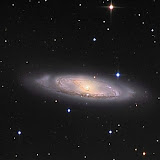February 30 is not part of Gregorian calendar. Under the Gregorian calendar, February contains 28 days, or 29 days for a leap year. However, under other calendars there were a few instances of a February 30.
{Disclaimer: I have attempted to give credit to the many different sources that I get entries. Any failure to do so is unintentional. Any statement enclosed by brackets like these are the opinion of the blogger, A Proud Liberal.}
INSTANCES OF FEBRUARY 30
● Swedish calendar February 1712:
● If people born on February 29 think they have it tough, what about people born on February 30? February 30 has happened only once in human history — in Sweden, in the year 1712. It was a delayed response to the calendar confusion Pope Gregory XIII unleashed on Europe in 1582. That was the year he decreed that all Catholic countries would drop the 10 days that had been October 5, 6, 7, 8, 9, 10, 11, 12, 13, and 14, go straight from October 4 to 15, and henceforth omit the leap years in century years except those divisible by 400.
● Most of the Catholic countries of western Europe adopted the new Gregorian calendar in 1582, and after a certain amount of consternation in October of that year, learned to live by it. But the Protestant countries were a different story. Each had to come to its own decision about this new calendar, and for some it was harder than others.
● By the late 1600s, the Swedes were still using the old Julian calendar, but they had begun to think that maybe they should join Protestant Germany and the other Scandinavian countries in a turn-of-the-century conversion to the Gregorian. About then, however, someone in Sweden had the brilliant idea that if they merely skipped the next 11 leap years, they wouldn’t have to drop 10 days all at once, and they’d be fully converted to the Gregorian calendar by 1740.
● So while Sweden’s neighbors dropped the 10 days, skipped the leap year in 1700 as the Gregorian calendar did, and made the conversion, Sweden merely skipped the leap year and otherwise left their old calendar intact. It didn’t take long for the Swedes to realize that they were now one day out of sync with the other countries that were still using the Julian calendar and 10 days out of sync with the countries that were now using the Gregorian calendar.
● They decided that it would just be too confusing to be different from everyone else for 40 years. So they didn’t skip anymore leap years, and in 1712 they added back in the one they had skipped in 1700 by including a one-time-only February 30. They were now back in sync with the Julian calendar, which was 11 days longer than the Gregorian.
● Finally, in 1753 — a year after England converted — Sweden, having resisted dropping 10 days all at once back in 1700, dropped 11 days and joined the rest of Europe. I find myself wondering what ever happened to the Swedish babies who chanced to be born on February 30, 1712 — and never once got to celebrate their true birthdays.
● Soviet revolutionary calendar:
● In 1929 the Soviet Union introduced a revolutionary calendar in which every working month had 30 days and the remaining 5 or 6 days were 'monthless' holidays. In this calendar, there existed a February 30 in the years 1930 and 1931; the revolutionary calendar was abandoned in 1931. However, the Gregorian calendar continued to be used in the Soviet Union during this period. This is confirmed by consulting the successive dates in daily issues of Pravda, the official newspaper of the Communist Party, in which February had 28 days in 1930 and 1931, but had 29 days in 1932, which agrees with the rules of the Gregorian calendar.
● Early Julian calendar:
● The 13th century scholar Sacrobosco claimed that in the Julian calendar February had 30 days in leap years between 45 BC and 8 BC, when Augustus shortened February to give the month of August named after him the same length as the month of July named after his adoptive uncle Julius Caesar. However, all other historical evidence relating to the Julian calendar during this period refutes Sacrobosco, including dual dates with the Alexandrian calendar.
● Artificial calendars:
● Artificial calendars may also have thirty February dates. For example, in a climate model the statistics may be simplified by having twelve months of thirty days. The Hadley Centre GCM is an example.
● Calendar reform proposals:
● Some calendar reform proposals do have February 30 like The 30x11 Calendar.
● Trivia:
● Bryan Muir, a National Hockey League player, claims to have been born on February 30th.
Click on this LINK to see original Wikipedia list with many having links with details.
Additional facts taken from:
Naturalist's Almanac Entry
Permanent Backlink to Post
Sister Blogs from A Proud Liberal
Happenings at This Day in History
About a year ago I stopped making regular updates to this blog to concentrate on my Namnesia Antidote blog. While that is an ongoing effort, I am starting what should be about a year long effort to revitalize the concept of a "This Day in History" blog. I have decided to leave this blog intact and as-is, using a new "This Day in History 2.0" blog for my expanded and full version. Please feel free to email with your ideas. The two tables below should allow you to find a posting for the "Day in History" you wish to research.
A Proud Liberal
About a year ago I stopped making regular updates to this blog to concentrate on my Namnesia Antidote blog. While that is an ongoing effort, I am starting what should be about a year long effort to revitalize the concept of a "This Day in History" blog. I have decided to leave this blog intact and as-is, using a new "This Day in History 2.0" blog for my expanded and full version. Please feel free to email with your ideas. The two tables below should allow you to find a posting for the "Day in History" you wish to research.
A Proud Liberal
| PREVIOUS MONTHS | |||
|---|---|---|---|
| JAN 2008 | FEB 2008 | MAR 2008 | APR 2008 |
| SEP 2007 | OCT 2007 | NOV 2007 | DEC 2007 |
| MAY 2007 | JUN 2007 | JUL 2007 | AUG 2007 |
| JAN 2007 | FEB 2007 | MAR 2007 | APR 2007 |
| SEP 2006 | OCT 2006 | NOV 2006 | DEC 2006 |
| NASA APOD GALLERIES | |||
|---|---|---|---|
| POSTED ONLY ON THIS DAY IN HISTORY 2.0 | |||
| POSTED ON BOTH BLOG VERSIONS LINK TO 2.0 BLOG | |||
| POSTED ON BOTH BLOG VERSIONS LINK TO ORIGINAL BLOG | |||
| MAR 2009 | APR 2009 | MAY 2009 | JUN 2009 |
| NOV 2008 | DEC 2008 | JAN 2009 | FEB 2009 |
| JUL 2008 | AUG 2008 | SEP 2008 | OCT 2008 |
| MAR 2008 | APR 2008 | MAY 2008 | JUN 2008 |
| DEC 2007 | TOP 12 2007 | JAN 2008 | FEB 2008 |
| AUG 2007 | SEP 2007 | OCT 2007 | NOV 2007 |
| JAN 2008 | FEB 2008 | JUN 2007 | JUL 2007 |
| OCT 2007 | NOV 2007 | DEC 2007 | TOP 12 2007 |
| JUN 2007 | JUL 2007 | AUG 2007 | SEP 2007 |
Wednesday, February 28, 2007
Subscribe to:
Post Comments (Atom)


















No comments:
Post a Comment